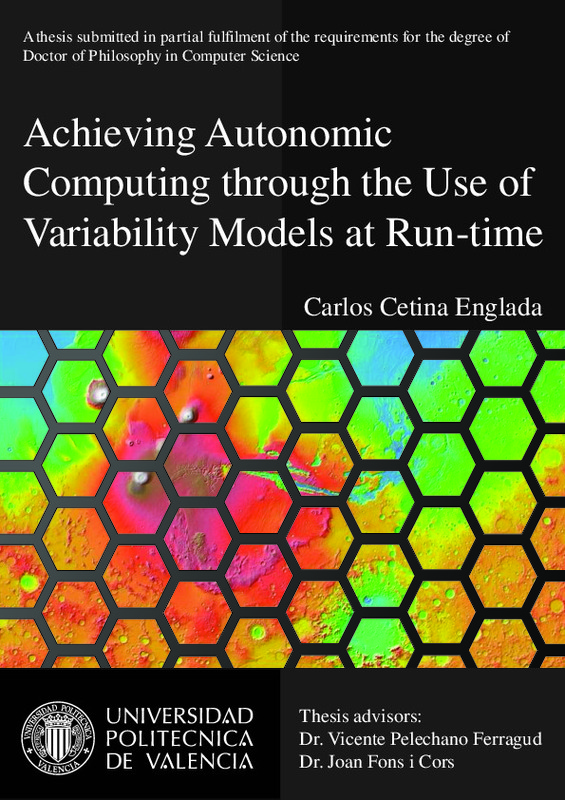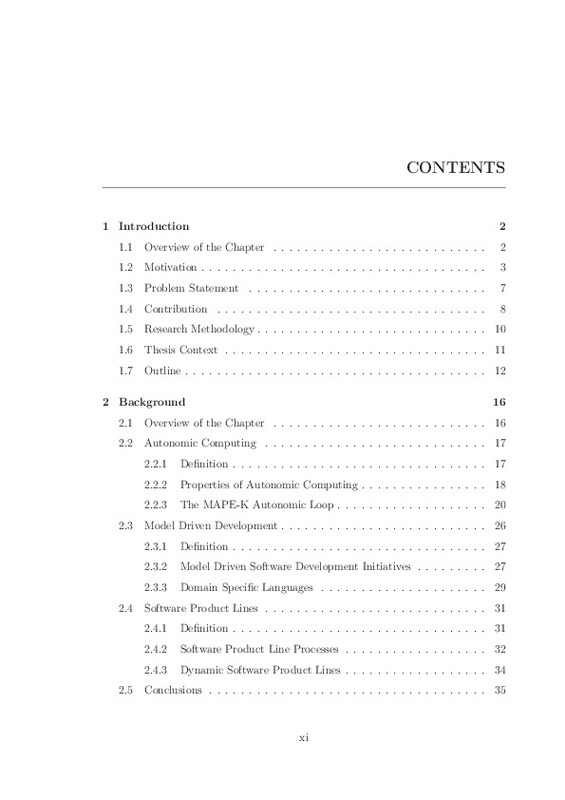- RiuNet repositorio UPV
- :
- Investigación
- :
- Tesis doctorales
- :
- Ver ítem
JavaScript is disabled for your browser. Some features of this site may not work without it.
Buscar en RiuNet
Listar
Mi cuenta
Estadísticas
Ayuda RiuNet
Admin. UPV
Achieving Autonomic Computing through the Use of Variability Models at Run-time
Mostrar el registro completo del ítem
Cetina Englada, C. (2010). Achieving Autonomic Computing through the Use of Variability Models at Run-time [Tesis doctoral]. Universitat Politècnica de València. https://doi.org/10.4995/Thesis/10251/7484
Por favor, use este identificador para citar o enlazar este ítem: http://hdl.handle.net/10251/7484
Ficheros en el ítem
Metadatos del ítem
| Título: | Achieving Autonomic Computing through the Use of Variability Models at Run-time | |||
| Autor: | Cetina Englada, Carlos | |||
| Director(es): | ||||
| Entidad UPV: |
|
|||
| Fecha acto/lectura: |
|
|||
| Resumen: |
Increasingly, software needs to dynamically adapt its behavior at run-time in response
to changing conditions in the supporting computing infrastructure and in
the surrounding physical environment. Adaptability is emerging ...[+]
|
|||
| Palabras clave: |
|
|||
| Derechos de uso: | Reserva de todos los derechos | |||
| DOI: |
|
|||
| Editorial: |
|
|||
| Tipo: |
|
recommendations
Este ítem aparece en la(s) siguiente(s) colección(ones)
-
Tesis doctorales [5452]







![Text file [Text]](/themes/UPV/images/text.png)



